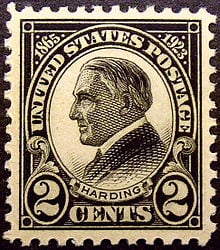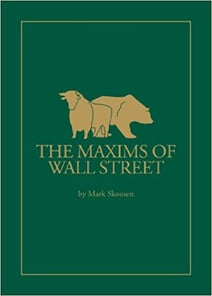The Fed and the politicians as well as many modern economists featured in the main stream media continually hearken back to the Great Depression, as if that is the only time in history our country went through a decline in the economy. There have been other depressions that are noteworthy examples to compare and contrast with the Great Depression. Perhaps there is some instruction we can glean from the depression of 1920-21.
This time period is continually ignored by the powers that be because it proves the absurdity of their policies. The conventional wisdom holds that without government countercyclical policy, whether fiscal or monetary (or both), we cannot expect economic recovery—at least, not without an intolerably long delay. Yet the very opposite policies were followed during the depression of 1920–21, and recovery was in fact quite swift.
That particular depression, although short lived, was as difficult and as steep in it's slump as that of the years of 1929-33. The simple difference is that it ended quickly. Here are some of the stats from that time period: From the spring of 1920 to summer 1921, nominal GDP fell by 23.9%, wholesale prices by 40.8% and the CPI by 8.3%. Unemployment topped out at about 14% from a preceding low of as little as 2%.
The depression also saw an extremely sharp decline in industrial production. From May 1920 to July 1921, automobile production declined by 60% and total industrial production by 30%. At the end of the recession, production quickly rebounded. Industrial production returned to its peak levels by October 1922. The AT&T Index of Industrial Productivity showed a decline of 29.4%, followed by an increase of 60.1% – by this measure, this depression of 1920–21 had the most severe decline and most robust recovery of any between 1899 and the Great Depression.
The climate was terrible for businesses – from 1919 to 1922 the rate of business failures tripled, climbing from 37 failures to 120 failures per every 10,000 businesses. Businesses that avoided bankruptcy saw a 75% decline in profits.
It is instructive, as well, to compare the American response in this period to that of Japan. In 1920, the Japanese government introduced the fundamentals of a planned economy, with the aim of keeping prices artificially high. According to economist Benjamin Anderson, “The great banks, the concentrated industries, and the government got together, destroyed the freedom of the markets, arrested the decline in commodity prices, and held the Japanese price level high above the receding world level for seven years. During these years Japan endured chronic industrial stagnation and at the end, in 1927, she had a banking crisis of such severity that many great branch bank systems went down, as well as many industries. It was a stupid policy. In the effort to avert losses on inventory representing one year’s production, Japan lost seven years.”
The U.S., by contrast, allowed its economy to readjust. “In 1920–21,” writes Anderson, “we took our losses, we readjusted our financial structure, we endured our depression, and in August 1921 we started up again. . . . The rally in business production and employment that started in August 1921 was soundly based on a drastic cleaning up of credit weakness, a drastic reduction in the costs of production, and on the free play of private enterprise. It was not based on governmental policy designed to make business good.”
Instead of “fiscal stimulus,” President Warren Harding cut the government’s budget nearly in half between 1920 and 1922. The rest of Harding’s approach was equally laissez-faire. Tax rates were slashed for all income groups. The national debt was reduced by one-third. The Federal Reserve’s activity, moreover, was hardly noticeable. As one economic historian puts it, “Despite the severity of the contraction, the Fed did not move to use its powers to turn the money supply around and fight the contraction.” By August of 1921, signs of recovery were already visible. The following year, unemployment was back down to 6.7 percent and was only 2.4 percent by 1923.
The federal government did not do what Keynesian economists ever since have urged it to do: run unbalanced budgets and prime the pump through increased expenditures. Rather, there prevailed the old-fashioned view that government should keep spending and taxation low and reduce the public debt.
Those were the economic themes of Warren Harding’s presidency. In his 1920 speech accepting the Republican presidential nomination, Harding declared:
“We will attempt intelligent and courageous deflation, and strike at government borrowing which enlarges the evil, and we will attack high cost of government with every energy and facility which attend Republican capacity. We promise that relief which will attend the halting of waste and extravagance, and the renewal of the practice of public economy, not alone because it will relieve tax burdens but because it will be an example to stimulate thrift and economy in private life.
“Let us call to all the people for thrift and economy, for denial and sacrifice if need be, for a nationwide drive against extravagance and luxury, to a recommittal to simplicity of living, to that prudent and normal plan of life which is the health of the republic. There hasn’t been a recovery from the waste and abnormalities of war since the story of mankind was first written, except through work and saving, through industry and denial, while needless spending and heedless extravagance have marked every decay in the history of nations.”
It is hardly necessary to point out that Harding’s counsel—delivered in the context of a speech to a political convention, no less—is the opposite of what the alleged experts urge upon us today. Inflation, increased government spending, and assaults on private savings combined with calls for consumer profligacy: such is the program for “recovery” in the twenty-first century.
Not surprisingly, many modern economists who have studied the depression of 1920–21 have been unable to explain how the recovery could have been so swift and sweeping even though the federal government and the Federal Reserve refrained from employing any of the macroeconomic tools—public works spending, government deficits, inflationary monetary policy, TARP, bailouts, QE—that conventional wisdom now recommends as the solution to economic slowdowns. The Keynesian economist Robert A. Gordon admitted that “government policy to moderate the depression and speed recovery was minimal. The Federal Reserve authorities were largely passive. . . . Despite the absence of a stimulative government policy, however, recovery was not long delayed.”
While there were many problems with Harding's presidency, his counsel applies to us today just as much as it did back back then. Sound fiscal policies, whether in government or in our homes require us to practice the principle of thrift and sacrifice; to learn to live a more simplified life, with less extravagance, and to live within our means.
What do you think about the solutions the Fed and the politicians are offering us today? Do you see ways we can return to the wisdom of the past? Join in the discussion with your comments.

 . It certainly is a fun read!
. It certainly is a fun read!




